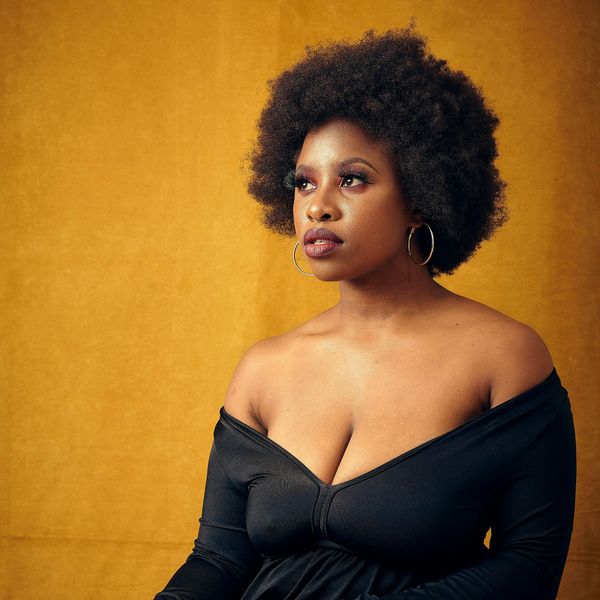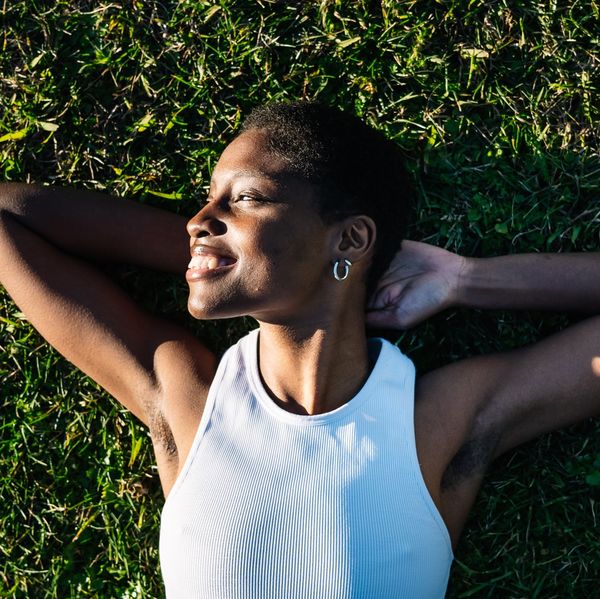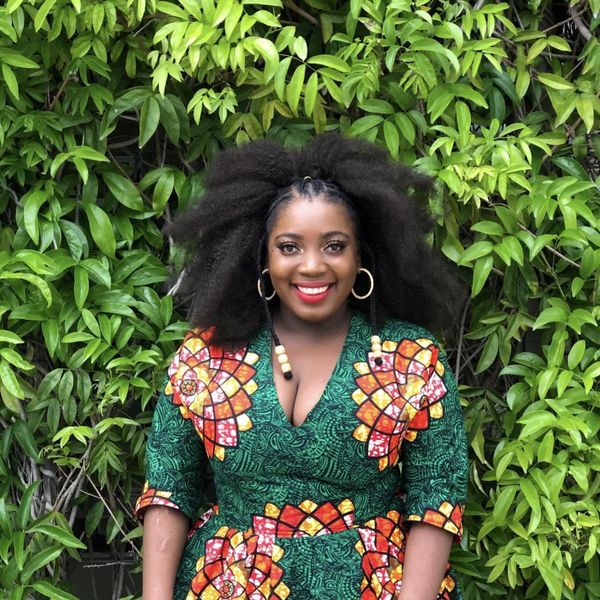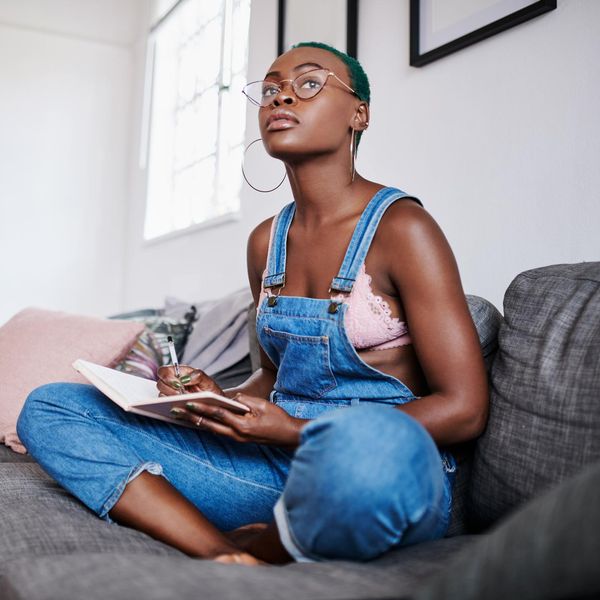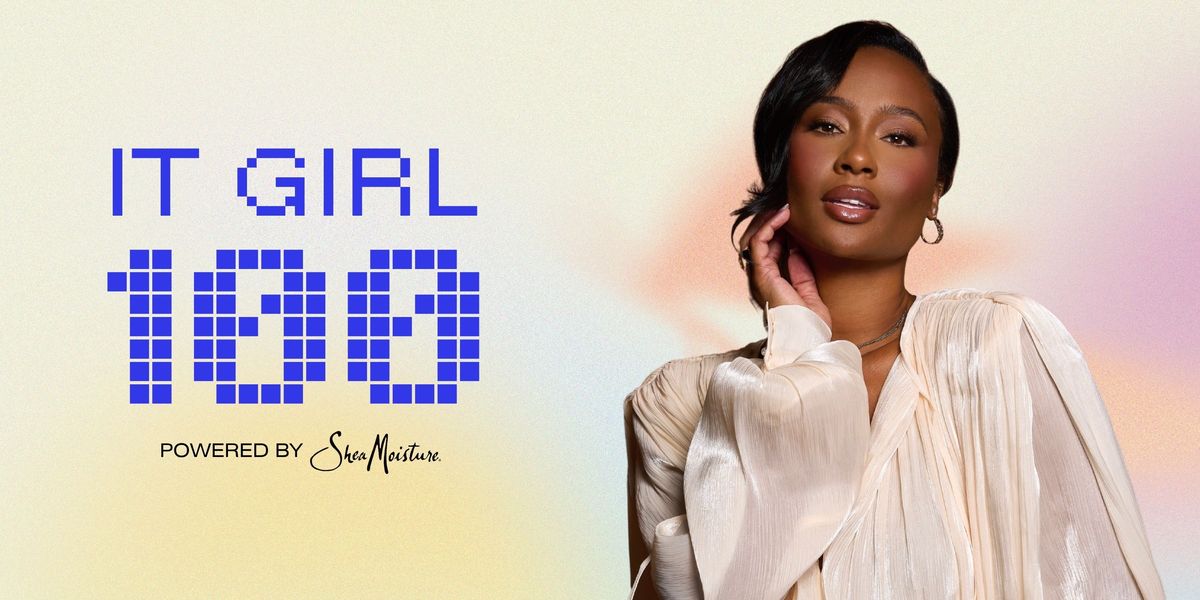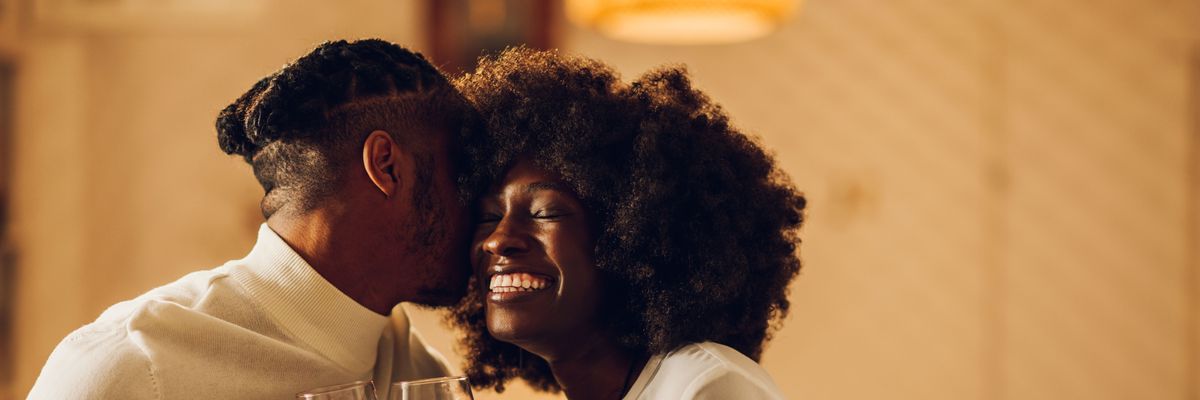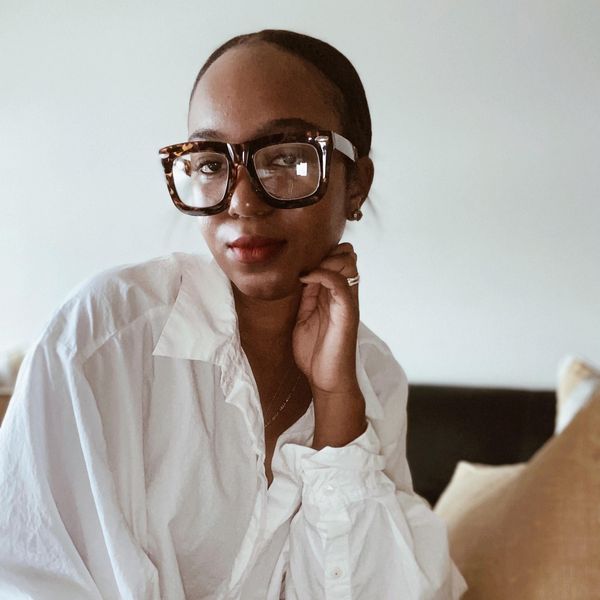
I remember Monday mornings at my old job when everyone (although they hated that it had ended) was eager to tell the whole office about their weekend. These were conversations that I deeply resented. One, because I had little interest in hearing about my coworkers' personal lives, and two, because they were instant reminders of how burnt out and misunderstood being in that place made me feel.
Every week it was the same thing: They'd ask me what I did during the weekend and could never believe their ears when they'd hear me say that I didn't do anything. Then, they would guilt-trip me into believing that I was wasting the best years of my life by staying hidden inside my cave and refusing to socialize.
To this day, I'm still wondering why it was so hard for them to conceive that the time we have off from our responsibilities isn't necessarily meant to be spent doing any other activities and that it's okay to choose to rest. That joy and fulfillment can also be found in unplugging from the world and reconnecting with ourselves.
In hindsight, I must admit that I was choosing to escape life every chance I had was more reflective of how miserable I was than the happiness I felt from retreating.
Indeed, a hard truth that I failed to acknowledge before I had the opportunity to discuss the art of embracing doing nothing with four amazing Black women and what it truly means to them is that my me-time had turned into toxic self-isolation. All because it was easier to run away from a life I didn't enjoy rather than making hard decisions that would change the course of my future for the better. The major takeaway that I got from speaking with the women below is that stillness shouldn't (just) be an exit door—and just like everything else in life, it has extremes that finding balance will prevent us from falling in.
Dr. Thema Bryant
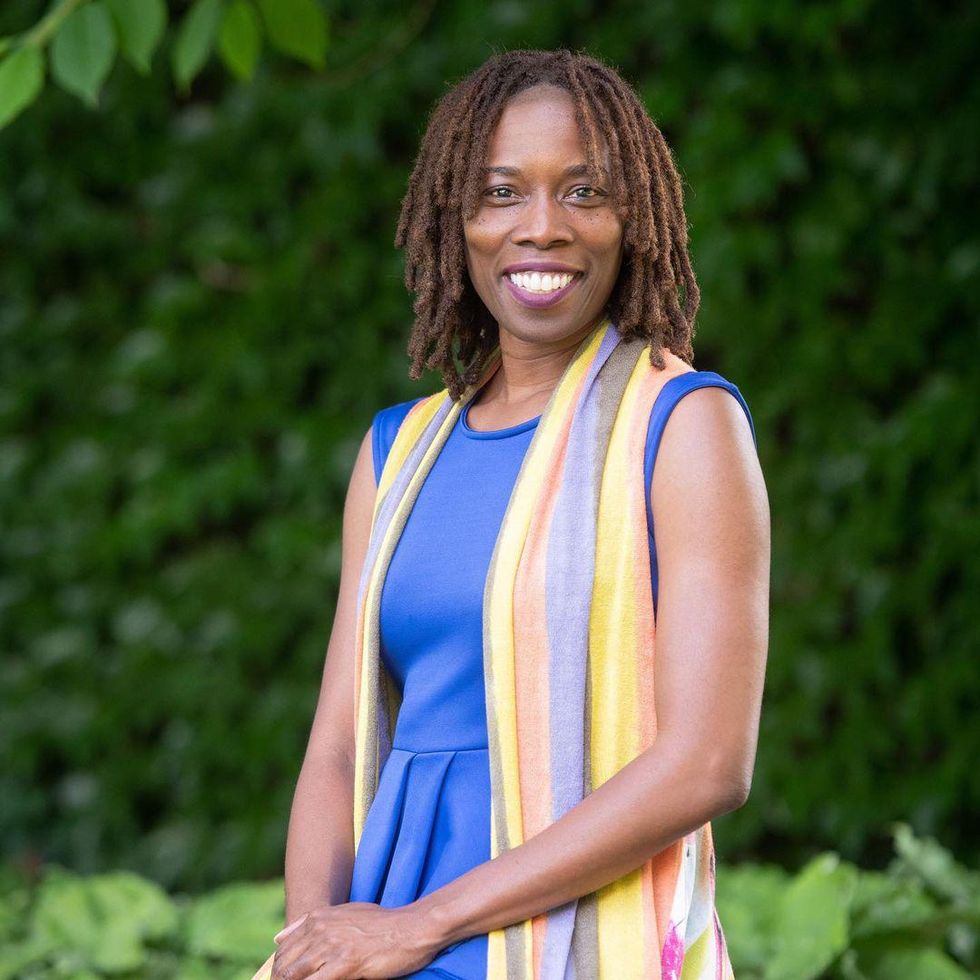
Courtesy of Dr. Thema Bryant
Licensed Psychologist & Professor at Pepperdine University
"Indulging in the art of doing nothing is such a radical decision, particularly for women of color because our worth and value are often associated with our busyness. For the longest time, women of color have been put under this pressure to work hard for everyone else. There's often little attention given to our care, [and] wellness, let alone our needs. So, for us to be revolutionary enough to say that those [things] matter and to choose to do nothing at all during moments of our days and life is a declaration that says, "I am worthy and I am enough. I don't have anything to prove."
"I was introduced to stillness by my mother. She's a minister who teaches, particularly women of African descent, about prayer. A lot of people associate prayer with talking but it turns out that a major point of prayer is in silence and stillness. It's a sacred rhythm between activity, action, accomplishment, and taking the time to be still, to reconnect, to be grounded, as well as to be filled. All of which [are] to ensure that when we pour, we are not operating out of emptiness.
"Growing up, I followed my mother's path and practiced stillness through prayer and meditation. Later, I also added physical movement that allows the mind to be still such as dancing and walking. I believe that there's a need to push back on the idea that the art of doing nothing can only be practiced by sitting still with our eyes closed and our legs crossed.
"To me, the art of doing nothing means slowing down our pace, becoming more aware, operating with gentleness and compassion to ourselves, etc. It's more a way of living than it is an approach to living. It's not something that we're required to schedule or practice during a specific time frame only. It's something that we can decide to do at any given moment."
"However, it is likely that sometimes, the urge to escape our own company by burying ourselves in work or finding something entertaining to do manifests itself. When this happens, it is important to truly understand that being in our own presence is not a punishment. Considering it as such or seeing it as a chore is the best way to miss the gift of it. It becomes another task to add to our to-do lists instead of being a pleasure that we're giving ourselves to stay still and do nothing but to reconnect.
"As a psychologist, I work a lot with trauma survivors and I noticed that people who have gone through very difficult experiences sometimes cope by staying busy. It's their way to prevent their thoughts from taking over their minds. But one thing I know for sure is that busy and distracted don't serve as a definition for healed. And unhealed traumas must be addressed at some point. One of the ways to do that is to practice the art of embracing doing nothing."
Visit Dr. Thema's website drthema.com.
Amber Janae
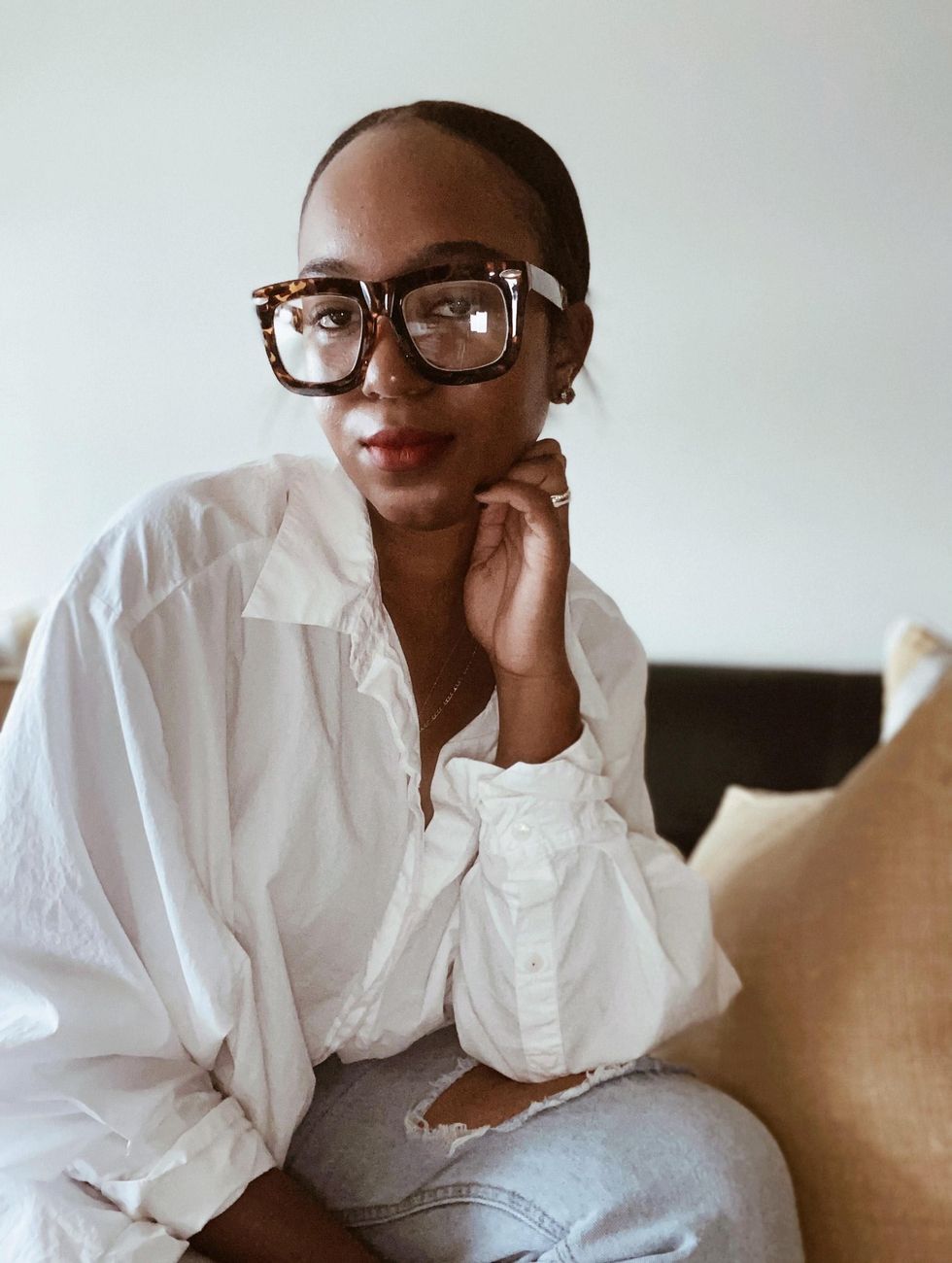
Courtesy of Amber Janae
Professional Expert in Content Strategy & Digital Marketing
"For me, the art of doing nothing is simply being as I am and not feeling any guilt, pressure, or a desire to be anyone or anything other than who I am in the present moment. I believe that women in general should learn to embrace stillness because it's our way to just be. It is the space where we become one with ourselves. It is important to understand that stillness is something that we choose; it does not choose us.
"Many spend a lot of time ignoring their intuition or that inner nudge guiding them in the direction to pause and just be for a while. When you're ready to discover and connect with the parts of yourself that have remained a mystery, you will make time to be still.
"To embrace stillness, you also have to let go of the misconception that stillness simply means not moving or staying in one place. You can force yourself not to physically move for days, weeks, and months but it doesn't guarantee progress is being made. It's not enough to be still, you have to disconnect."
"For me, the art of doing nothing is less of a practice and more of a natural state of being. The benefits that I've gained from such have been loving and trusting myself more than ever before—and not allowing anything to change that. Self-care isn't a one-off thing I do when I am having a bad day or week. I am forever intentionally creating a safe space for myself internally and externally; therefore, I am always practicing a form of self-care. It is less of a single method or action; it is a way of being... It is an organic way of life in my world.
"Personally, I do not believe that stillness is scary. There are very few things that I fear and stillness isn't one. Fearing growth, evolving, or becoming a better me which are the things that we embody when we choose to remain still isn't a natural act to me. In my opinion, if you're actively choosing entrapment, then it more than likely means that you're afraid to face yourself. You live in fear of what awaits you on the other side of self-discovery. You're running from your truth and not ready to embrace, accept, or face the parts of you that need healing."
Follow Amber on Instagram @ajscribes.
Tempest Linh
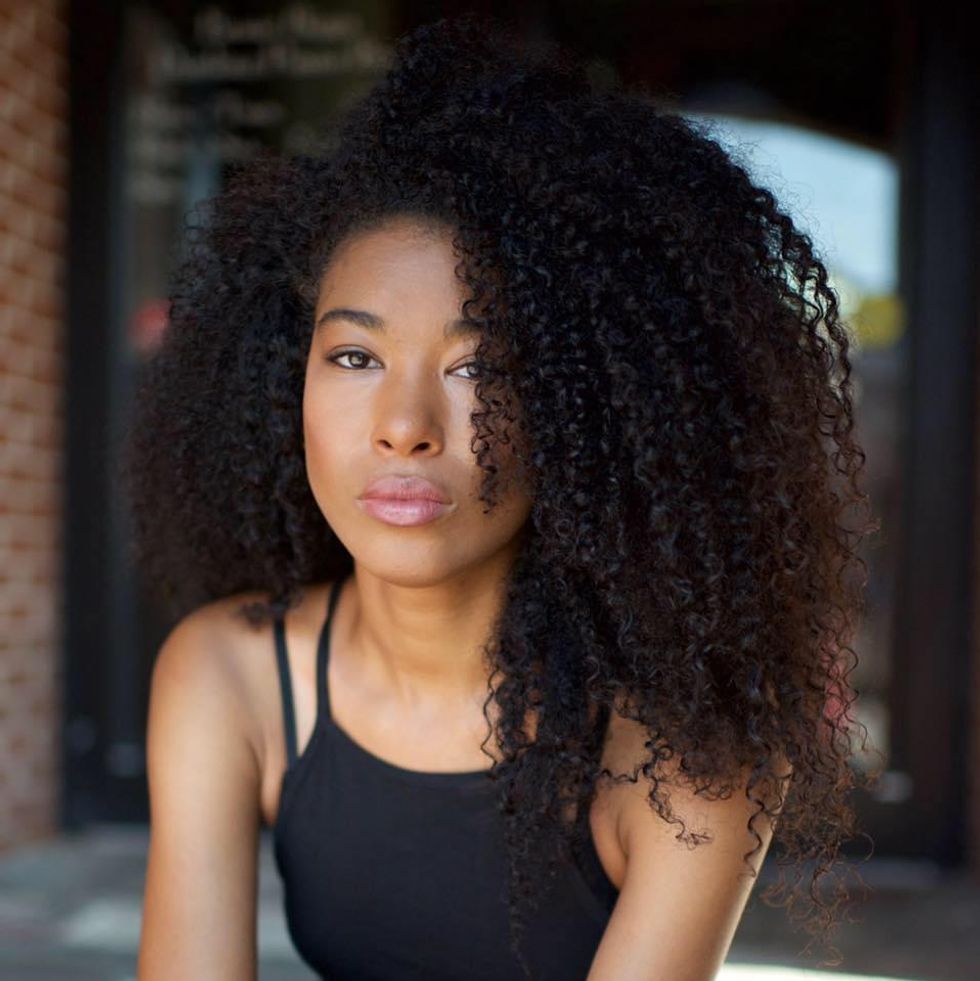
Courtesy of Tempest Linh
Freelance Writer, Martial Artist & Tarot Reader
"I learned the true concept of stillness through my journey as a martial artist, which started in 2018. I practice American Kenpo Karate and Tai Chi. My head instructor, a badass Southeast Asian woman, taught me the principles of meditation (Anapanasati) and stillness that I currently practice. Typically, when people think of meditation, they imagine themselves seated in a lotus position and devoid of all thoughts. But that's not what true stillness is to me—it's honestly not realistic, especially in today's climate.
"Stillness is when your mind is racing, but you're not consumed by those thoughts. It's when something can pop up in your mind and you don't ruminate over it. When you can observe your thoughts and emotions without judgment, and just let yourself be."
"Martial arts is my main outlet for practicing stillness. The practice happens when I'm faced with my 'not enough story', as my head instructor calls it. The 'not enough story' is an overwhelming feeling of inadequacy. This happens when I feel like I'm not learning a form or set of techniques fast enough, or when I do learn it I feel like I'm doing it all wrong. It's that nagging inner critic that we all have. The challenge is to move through it, even when I feel like I'm just not good enough, and this mindset trickles into daily life outside of the dojo.
"With that said, even in knowing and experiencing the benefits of stillness, I still struggle to resist escaping my own company. Sometimes, the thought of being alone with myself, and my thoughts is kind of terrible. Even showing up to karate can truly be a struggle—and 2020 made it especially hard. We normally live in a world that's made of distractions, so being forced to pause and sit with ourselves truly allows our 'not enough' stories to come out and be heard. Then, our insecurities become glaringly obvious. I've experienced many existential crises when faced with mine. Being pummeled by your own thoughts and anxieties can be a bit too much; mine, for example, are like monsters and a lot of the time, I just don't want to face them.
"Eventually, it gets to the point where I can't avoid it anymore and I have to sit with myself and get realigned and refocused. But that's when I remember to breathe, find one truth in the madness of my thoughts—because our brains lie to us a lot—and stick to it. I would like to grow to a point where taking the necessary time for myself becomes a daily practice, not just something that I do when I'm fed up."
Follow Tempest on Twitter @sunstorm_.
Radiah Rhodes
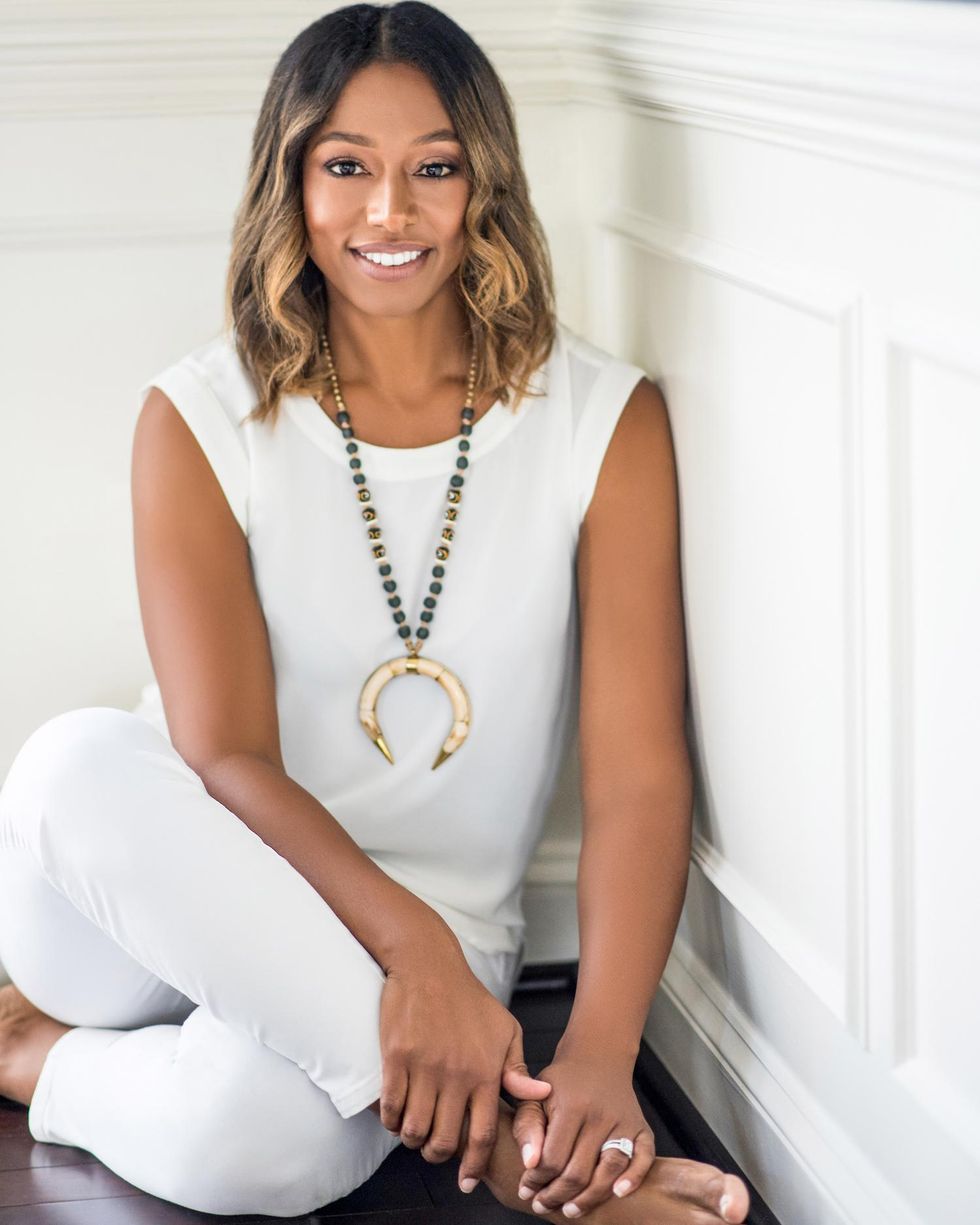
Courtesy of Radiah Rhodes
Founder at Evók and Smart Pressed Juice & Well-Being Innovator
"The word I'd use to define stillness is 'light'. To me, stillness is where your truth and all the answers that you're looking for reside. It's also an art for which you don't find the time to practice, you create it. Every season, I follow The Inner Game Plan™, a step-by-step process to practicing stillness that I came up with 10 years ago with the intent to save myself and which I'm now able to share with the world. I schedule two to three hours of uninterrupted time and space so I can go through each exercise and stay aligned. I've committed to this process as a way to live my life that makes my well-being the priority and the source for everything else. It allows me to build assurance in my spirit and such peace in my soul from knowing that I stopped, prioritized, inquired, listened, and honored what is within me.
"If it wasn't for stillness, I wouldn't have been able to discover my truth, flow, nor the power of who I am. Because I know me and what works for me, I, therefore, know how to wield it in the world for the good of what matters most to me with very little effort. There's authentic power in stillness."
"With that said, I didn't get to the point of fully embodying stillness without experiencing fear. Stillness is scary. First, it feels like if we take our foot off of the gas pedal that's gotten us this far, everything is going to drop when we stop. We deeply believe that our 'doing' is the only way to get things done. Then, there's the fear of the unknown—or the unacknowledged because we've been suppressing so much. It's catastrophizing whatever you might uncover. I remember always feeling like I couldn't allow my thoughts or feelings out because then I'd have to do something about them and it was either going to be drastic or cause the loss of something significant if I acknowledged the truth.
"'If I tell the truth about my job, I'm going to have to quit,' I'd think. Or 'If I tell the truth about my marriage, I'm going to have to get a divorce.' In my head, there was so much riding on me: family, finances, community, the culture, the country...all of it. It's easy to think that if we stop, everything will fall apart. That was a catastrophe to be avoided at all costs in my world. However, I came to understand that the pain of suppressing and avoiding is far worse than any discomfort or challenge that stillness and owning your truth will put you through."
Follow Radiah on Instagram @radiahrhodes.
Featured image courtesy of Amber Janae
- Mashonda Tifrere On The Importance Of Self-Inflicted Solitary ... ›
- SZA Cosmopolitan Cover Best Quotes - xoNecole: Women's Interest ... ›
- Lessons I Learned In The Stillness Of Recovery - xoNecole ... ›
- Worry Changes Nothing. Peace Alters Everything. - xoNecole ... ›
- What My 45-Year-Old Self Would Tell My 25-Year-Old Self - xoNecole: Women's Interest, Love, Wellness, Beauty ›
Exclusive: Viral It Girl Kayla Nicole Is Reclaiming The Mic—And The Narrative
It’s nice to have a podcast when you’re constantly trending online. One week after setting timelines ablaze on Halloween, Kayla Nicole released an episode of her Dear Media pop culture podcast, The Pre-Game, where she took listeners behind the scenes of her viral costume.
The 34-year-old had been torn between dressing up as Beyoncé or Toni Braxton, she says in the episode. She couldn’t decide which version of Bey she’d be, though. Two days before the holiday, she locked in her choice, filming a short recreation of Braxton’s “He Wasn’t Man Enough for Me” music video that has since garnered nearly 6.5M views on TikTok.
Kayla Nicole says she wore a dress that was once worn by Braxton herself for the Halloween costume. “It’s not a secret Toni is more on the petite side. I’m obsessed with all 5’2” of her,” she tells xoNecole via email. “But I’m 5’10'' and not missing any meals, honey, so to my surprise, when I got the dress and it actually fit, I knew it was destiny.”
The episode was the perfect way for the multihyphenate to take control of her own narrative. By addressing the viral moment on her own platform, she was able to stir the conversation and keep the focus on her adoration for Braxton, an artist she says she grew up listening to and who still makes her most-played playlist every year. Elsewhere, she likely would’ve received questions about whether or not the costume was a subliminal aimed at her ex-boyfriend and his pop star fiancée. “I think that people will try to project their own narratives, right?” she said, hinting at this in the episode. “But, for me personally – I think it’s very important to say this in this moment – I’m not in the business of tearing other women down. I’m in the business of celebrating them.”
Kayla Nicole is among xoNecole’s It Girl 100 Class of 2025, powered by SheaMoisture, recognized in the Viral Voices category for her work in media and the trends she sets on our timelines, all while prioritizing her own mental and physical health. As she puts it: “Yes, I’m curating conversations on my podcast The Pre-Game, and cultivating community with my wellness brand Tribe Therepē.”
Despite being the frequent topic of conversation online, Kayla Nicole says she’s learning to take advantage of her growing social media platform without becoming consumed by it. “I refuse to let the internet consume me. It’s supposed to be a resource and tool for connection, so if it becomes anything beyond that I will log out,” she says.
On The Pre-Game, which launched earlier this year, she has positioned herself as listeners “homegirl.” “There’s definitely a delicate dance between being genuine and oversharing, and I’ve had to learn that the hard way. Now I share from a place of reflection, not reaction,” she says. “If it can help someone feel seen or less alone, I’ll talk about it within reason. But I’ve certainly learned to protect parts of my life that I cherish most. I share what serves connection but doesn’t cost me peace.
"I refuse to let the internet consume me. It’s supposed to be a resource and tool for connection, so if it becomes anything beyond that I will log out."
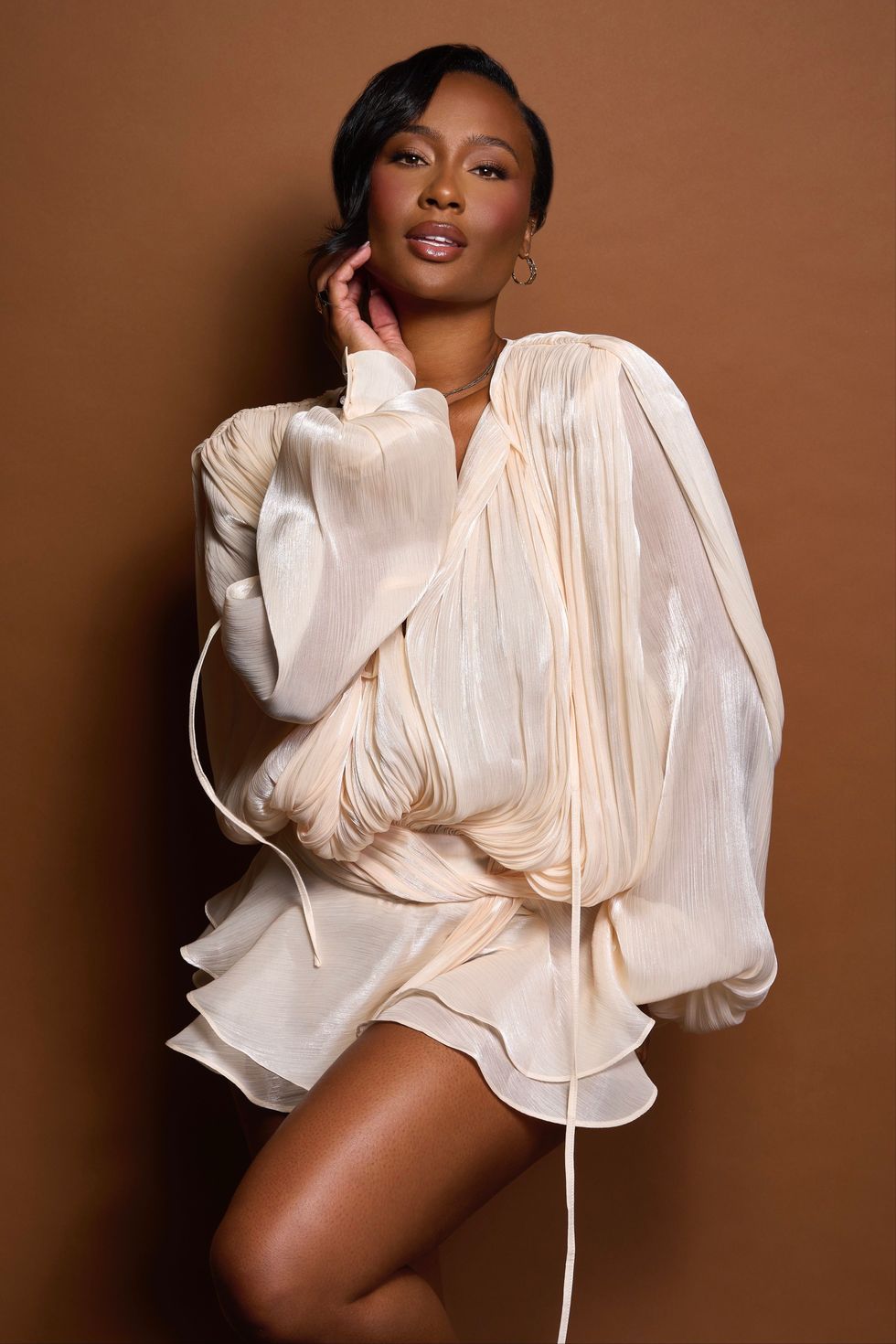
Credit: Malcolm Roberson
Throughout each episode, she sips a cocktail and addresses trending topics (even when they involve herself). It’s a platform the Pepperdine University alumnus has been preparing to have since she graduated with a degree in broadcast journalism, with a concentration in political science.
“I just knew I was going to end up on a local news network at the head anchor table, breaking high speed chases, and tossing it to the weather girl,” she says. Instead, she ended up working as an assistant at TMZ before covering sports as a freelance reporter. (She’s said she didn’t work for ESPN, despite previous reports saying otherwise.) The Pre-Game combines her love for pop culture and sports in a way that once felt inaccessible to her in traditional media.
She’s not just a podcaster, though. When she’s not behind the mic, taking acting classes or making her New York Fashion Week debut, Kayla Nicole is also busy elevating her wellness brand Tribe Therepē, where she shares her workouts and the workout equipment that helps her look chic while staying fit. She says the brand will add apparel to its line up in early 2026.
“Tribe Therepē has evolved into exactly what I have always envisioned. A community of women who care about being fit not just for the aesthetic, but for their mental and emotional well-being too. It’s grounded. It’s feminine. It’s strong,” she says. “And honestly, it's a reflection of where I am in my life right now. I feel so damn good - mentally, emotionally, and physically. And I am grateful to be in a space where I can pour that love and light back into the community that continues to pour into me.”
Tap into the full It Girl 100 Class of 2025 and meet all the women changing game this year and beyond. See the full list here.
Featured image by Malcolm Roberson
This Is How To Keep 'Holiday Season Stress' From Infecting Your Relationship
Hmph. Maybe it’s just me, but it seems like there is something really weird happening in the fall season air (because winter doesn’t officially begin until December 21) that cuddle season is in full swing while break-up season is as well. In fact, did you know that break-ups are so popular during the holiday season that December 11 is deemed Break-Up Day?
The reasons why relationships shift around this time vary; however, I did both roll my eyes and chuckle when I read that a very popular one is because it’s an easy way to get out of getting one’s significant other a Christmas present. SMDH.
Anyway, I personally think that the less shallow folks out here may contemplate calling things “quits” or they at least distance themselves a bit from their partner (and what I’m referring to is serious relationships) due to all of the stress and strain that oftentimes comes with the holidays whether it be financial, familial, due to their tight schedules or something else.
Listen, I would hate for you and your man to miss the fun and happiness of experiencing this time of year, all because you are so overwhelmed or irritated that you can’t really enjoy it. That’s why I have a few practical tips for how to avoid allowing the typical holiday season stress from INFECTING your relationship.
Manage Your Expectations
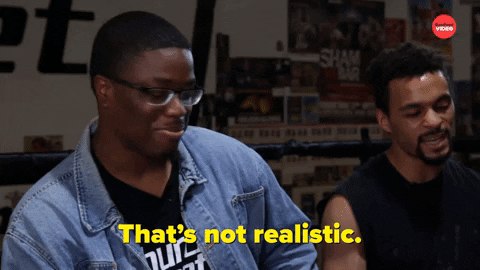 Giphy
GiphyUnmanaged expectations. If there is a main reason why the holiday season tends to be so stress-filled for so many people, I’d bet good money that this is the cause. And when you’re in a long-term relationship, expectations can manifest themselves in all sorts of cryptic and/or unexpected ways. You might have relatives who assume that you are going to be with them for Thanksgiving or Christmas when you have other plans in mind. You might be thinking that you are going to spend one amount for presents while your man is thinking something totally different. When it comes to scheduling, your signals may be crossed.
And you know what? To all of these scenarios, this is where clear and consistent communication come in. Don’t assume anything. Don’t dictate anything either. From now until New Year’s, mutually decide to check in once a week, just to make sure that you are both on the same page as it relates to the holidays and what you both are thinking will come along with it. The less blindsided you both feel, the less stressed out you will be. Trust me on this.
Set (and Keep) a Budget
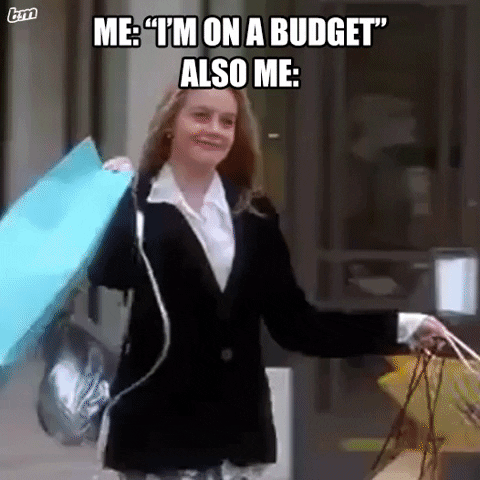 Giphy
GiphyOkay, so I read that last year, 36 percent of Americans incurred some type of holiday-related debt. Hmph. Last year, there was still some sense of normalcy in this country, chile, so I can only imagine what finances are gonna look like over the next several weeks. That said, since I don’t know a lot of people who don’t find being broke stressful, make sure that you and your bae set a budget and then stick to it this year — no ifs, ands or buts.
Because really, y’all — it doesn’t make sense to deplete savings and/or max out credit cards for a few days of giggles only to be damn near losing your mind because you don’t know how to make ends meet come Dr. Martin Luther King, Jr. Day.
And by the way, this tip doesn’t just speak to things like food and gifts; I also mean travel. If it doesn’t make a ton of sense (or cents) to be all over the place this year — DON’T BE.
Keep Matthew 5:37 at the Forefront
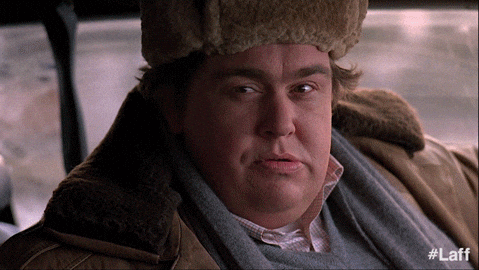 Giphy
GiphyIf off the top of your head, you don’t know what Matthew 5:37 says, no worries, here ya go: “But let your ‘Yes’ be ‘Yes,’ and your ‘No,’ ‘No.’ For whatever is more than these is from the evil one.” That verse right there? Oh, it’s a boundaries lifesaver! I say that because do you see “maybe” or “I’ll think about it” in there? Nope. LOL. It says that you should tell people “yes” or “no” and leave it at that — and that complements Anne Lamott’s quote, “’No’ is a complete sentence” impeccably well. Yeah, you’ve got to remember that anything beyond a yes or no to a request is privileged information; you don’t owe anyone details or an explanation.
Besides, if you are really honest with yourself, when someone asks you something and you give a “Umm, let me think about it” kind of reply, more times than not, you already know what your answer is going to be — so why not let you both off of the hook? Give your response. Commit to that. And let everyone (including yourself) get on with their lives and schedules.
I promise you that when it comes to those holiday parties, you are pissing more folks off by not RSVP’ing or doing so and not showing up than just saying, “Thank you but not this year” off the rip.
Remember That Your Personal Space Is Privilege Not a Right
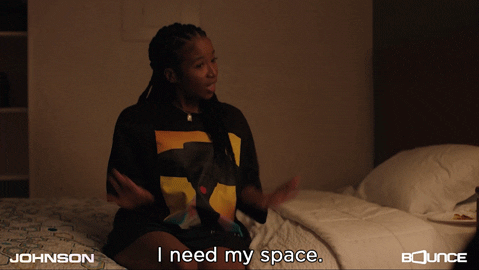 Giphy
GiphyA friend of mine recently bought a new house and invited me over to come see it. He’s a single man with no children, so as I was taking in all of the space that he had, especially as I walked through his finished basement, I joked about relatives coming to live with him. “Hell no” and “absolutely not” were pretty much his immediate responses as he went on to say that some folks even had the nerve to be offended when he told them that he had no intentions on taking DNA in.
Ain’t it wild how people think that your stuff is their right? And yes, that brings me to my next point. Your home is your sanctuary space. If you want to host folks this year — cool. If not, ALSO COOL. Please don’t let folks (family included) guilt you into how they want you to act or even into what they would do if the shoe was on the other foot. You are not them — and as one of my favorite quotes states, “If two people were exactly alike, one of them would be unnecessary.” (A man by the name Larry Dixon said that.)
Hell, my friends? They know that I am good for sending them random things that they need or even want all throughout the year. Coming over to hang out at my pace, though. Uh-uh. Chalk it up to being a card-carrying member of the ambivert club yet I like keeping my living space personal — and I sleep like a baby, each and every night, for feeling that way.
Always remember that your space, your time, your resources, your energy and shoot, yourself period (including your relationship), are all things that are your own. You get to choose how, when and why you want to share them. The holiday season is certainly no exception.
Cultivate Some “You Two Only” Traditions
 Giphy
GiphyIt’s not uncommon for some couples to hit me up after the holiday season to “detox.” Sometimes it’s due to the financial drama (and sometimes trauma) that they experienced. Sometimes it’s because they allowed their relatives (especially in-laws) to get more into their personal business than they should’ve. More than anything, though, it tends to be because they didn’t get enough quality time together and so ended up feeling “disconnected.”
Please don’t let that happen. Listen, I’m not even a holidays kind of woman and yet, I will absolutely sit myself down with some hot chocolate and chocolate chip cookies to enjoy a Hallmark holiday film or two. Aside from the fact that most of them are lighthearted and sweet, I also like that they usually focus on couples loving on each other amidst all of the holiday beauty and ambiance — which is something that all couples should set aside some time to do.
Maybe it’s a vacation. Maybe it’s a staycation. Or maybe it’s my personal favorite, A SEXCATION. Whether it’s for a few days, the weekend or even overnight — don’t you let the holidays go by without setting aside time for you and your man to celebrate one another. Don’t you dare (check out “Are You Ready To Have Some Very Merry 'Christmas Sex'?”).
GET. SOME. REST.
 Giphy
GiphyI once read that 8 out of 10 people get stressed out over the holidays and 3 out of 10 lose sleep during to it — and when you’re stress-filled and sleep-deprived, that can absolutely lead to hypersensitivity, making mountains out of molehills and even not being in the mood for sex.
Your relationship can’t afford to go through any of this, so definitely make sure to prioritize rest. I don’t care how unrealistic it might seem during this time, sleep should never be seen as a luxury; it will always and forever be a great necessity.
That said, try to get no less than six hours of shut-eye in (check out “6 Fascinating Ways Sex And Sleep Definitely Go Hand In Hand”) and even ask your bae to take a nap with you sometimes (check out “Wanna Have Some Next-Level Sex? Take A Nap, Sis.”). Not only will sleep help to restore your mind, body and spirit but, when it’s with your partner, it’s an act of intimacy that can make you both feel super connected, even in the midst of what might feel like chaos.
___
Holiday season stress is real. Still, never give it the permission or power to throw your relationship off. Put you and your man first and let the holidays be what they are gonna be, chile.
Let’s make things inbox official! Sign up for the xoNecole newsletter for love, wellness, career, and exclusive content delivered straight to your inbox.
Featured image by Shutterstock



